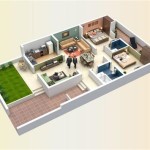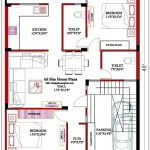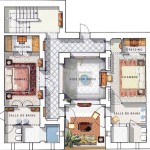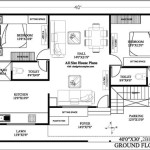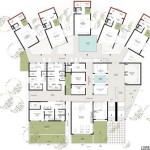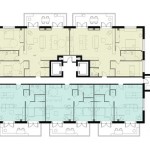House Plan Styles: A Comprehensive Guide to Choosing the Perfect Home Design
Choosing the right house plan style for your dream home can be an exciting yet daunting task. With countless options available, it's essential to understand the key aspects of each style to make an informed decision. Whether you prefer classic elegance or modern flair, this comprehensive guide will help you navigate the world of house plan styles and find the perfect fit for your needs and preferences.
1. Architectural Style
Architectural style refers to the overall design aesthetic of the house, influenced by historical periods, cultural traditions, and regional influences. Here are some popular architectural styles to consider:
- Traditional: Inspired by classic European and American designs, traditional houses feature symmetrical facades, pitched roofs, and detailed moldings.
- Contemporary: Emphasizing clean lines, open floor plans, and floor-to-ceiling windows, contemporary houses embrace modern architectural principles.
- Craftsman: Known for their exposed rafters, stone or wood accents, and cozy interiors, Craftsman houses evoke the Arts and Crafts movement.
- Colonial: Characterized by rectangular shapes, centered entrances, and symmetrical windows, Colonial houses pay homage to American colonial architecture.
- Tudor: With steeply pitched roofs, asymmetrical facades, and decorative half-timbering, Tudor houses resemble medieval English cottages.
2. Exterior Features
The exterior features of a house plan determine its curb appeal and functionality. Key elements to consider include:
- Roofing: Choose from various roof styles, such as pitched, flat, or gable, to complement the architectural style and enhance drainage.
- Siding: Select siding materials like vinyl, brick, or stucco that suit your aesthetic preferences and local climate conditions.
- Windows and Doors: The size, shape, and placement of windows and doors influence natural light, ventilation, and the overall facade design.
- Porches and Patios: Outdoor living spaces such as porches and patios provide additional space for relaxation and entertainment.
- Garage: Consider the size and location of the garage to accommodate your parking needs and provide storage.
3. Interior Layout
The interior layout of a house plan determines the functionality and flow of the living spaces. Important aspects to consider:
- Number of Bedrooms: Determine the number of bedrooms required based on your family size and lifestyle.
- Bathrooms: Plan for adequate bathrooms, including master suites, guest bathrooms, and powder rooms.
- Kitchen Design: Choose from various kitchen layouts, such as U-shaped, L-shaped, or island kitchens, to suit your cooking and entertaining needs.
- Open vs. Closed Floor Plan: Consider whether you prefer an open floor plan with connected living spaces or a more traditional closed floor plan with separate rooms.
- Flow and Traffic: Ensure a smooth flow of traffic throughout the house, avoiding bottlenecks or awkward room transitions.
4. Size and Capacity
The size and capacity of a house plan should align with your current and future needs. Key considerations include:
- Square Footage: Determine the optimal square footage based on the number of occupants, lifestyle, and available budget.
- Number of Stories: Consider whether a single-story, two-story, or multi-story house best meets your space requirements and preferences.
- Room Sizes: Allocate adequate space for each room, considering furniture arrangements and storage needs.
- Ceiling Heights: Decide on the desired ceiling heights to create a sense of spaciousness and architectural interest.
- Storage and Closets: Plan for ample storage space to keep your belongings organized and clutter-free.
5. Customization and Personalization
Once you have chosen a house plan style, you can customize it to reflect your individual preferences and lifestyle. Options for customization include:
- Exterior Finishes: Select finishes that match your aesthetic style and complement the surroundings, such as paint colors, siding materials, and landscaping.
- Interior Design: Personalize the interior spaces with your choice of flooring, wall colors, furniture, and decor.
- Special Features: Add unique features to enhance your living experience, such as fireplaces, built-in shelves, or home automation systems.
- Energy Efficiency: Consider energy-efficient features like double-paned windows, insulation, and solar panels to reduce your environmental footprint and energy costs.
- Accessibility: Incorporate accessibility features, such as wheelchair ramps or wide doorways, to ensure comfort and safety for all occupants.
Conclusion
Choosing the right house plan style is a significant decision that will shape your dream home for years to come. By understanding the essential aspects of house plan styles and considering your specific needs and preferences, you can find the perfect design that perfectly complements your lifestyle and aspirations. Remember to work closely with an experienced architect or builder to ensure a seamless and satisfying home-building experience.

Savannah Home Plan Weber Design Group Naples Fl

Cottage Style House Plan Screened Porch By Max Fulbright Designs

Search Top House Plan Styles Family Home Plans

Pinecone Trail House Plan One Story

Plan 75137 Beautiful Craftsman Bungalow With 1879 Sq Ft 3

Beautiful Modern Farm House Style Plan 7281 Morning Trace

Hillwood House Plan Sater Design Collection

House Plan Styles Search Best Designs Floor Plans

Ranch Style House Plan 2 Beds Baths 988 Sq Ft 126 246 Houseplans Com

Florida House Plans Style Home Designed Custom

